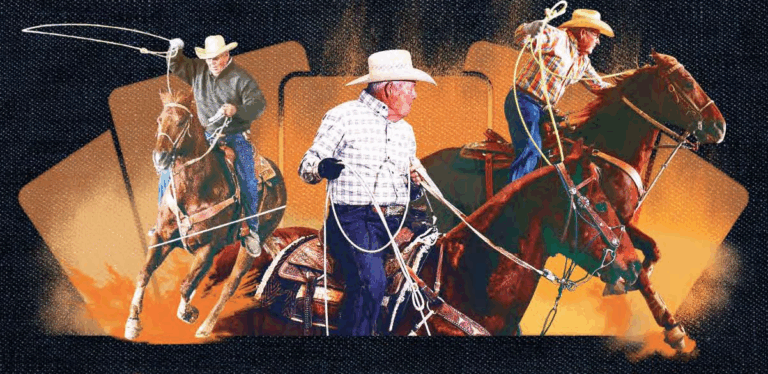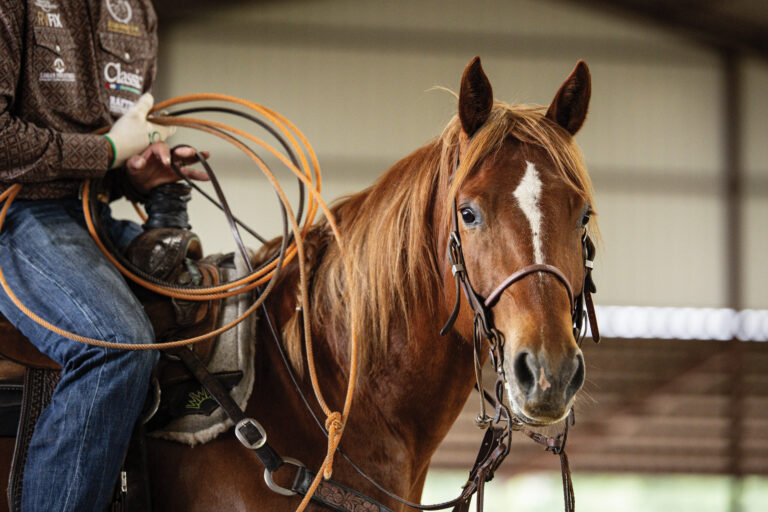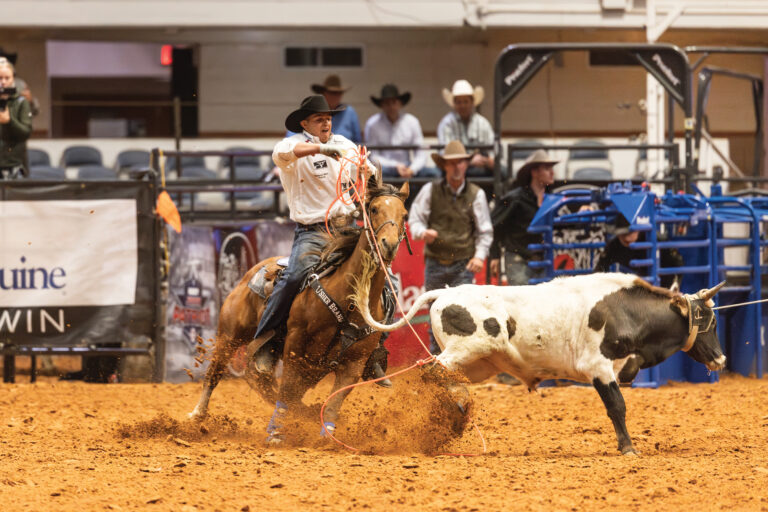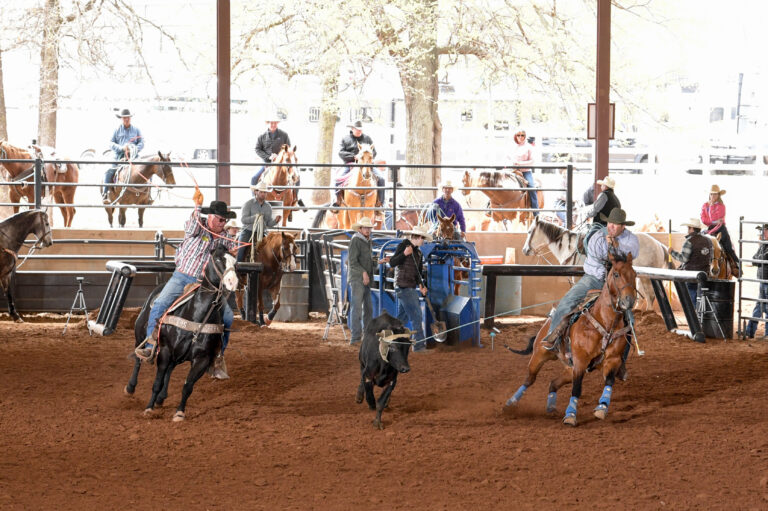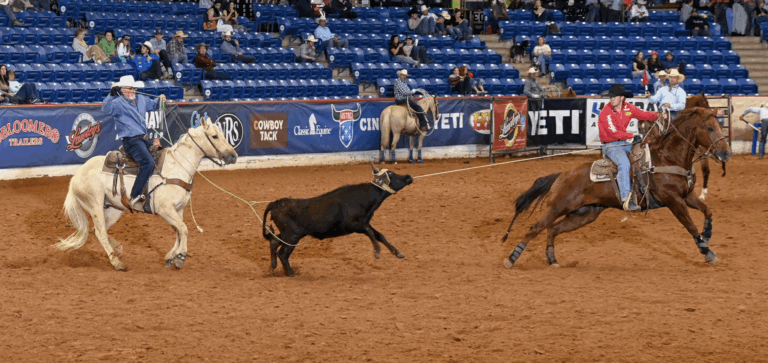Everybody knows there’s no more crucial component to success at every level of this game than horsepower. It’s also a fact that the majority of the hundreds of thousands of team ropers in this country make their livings outside the arena and rope recreationally after work and on weekends. But with bundles of big bucks up for grabs at every turn for team ropers today—$5 million at the 2017 Cinch National Finals of Team Roping in Oklahoma City, and $12 million at the 2017 World Series of Team Roping Finale alone—a horse upgrade is how ropers graduate from good to great and come through in the clutch for the win.
The basic economic law of supply and demand has kicked in full force in the team roping horse business, and it’s a hot topic for all involved—recreational ropers and rodeo ropers alike. We asked a few industry experts to share in this conversation about the growing rope-horse market, and how all ropers of all ages and skill sets can benefit from a movement that’s gaining momentum fast.
J.D. Yates is an all-around roping industry icon. Yates, 57, has roped at 21 Wrangler National Finals Rodeos, and is one of the rare few versatile enough to qualify at both ends—19 times as a heeler and twice on the heading side. The 10-time National Finals Steer Roping qualifier has also ridden horses to 44 American Quarter Horse Association world championships, and five ultimate versatility Superhorse awards at the AQHA World Championship Show.
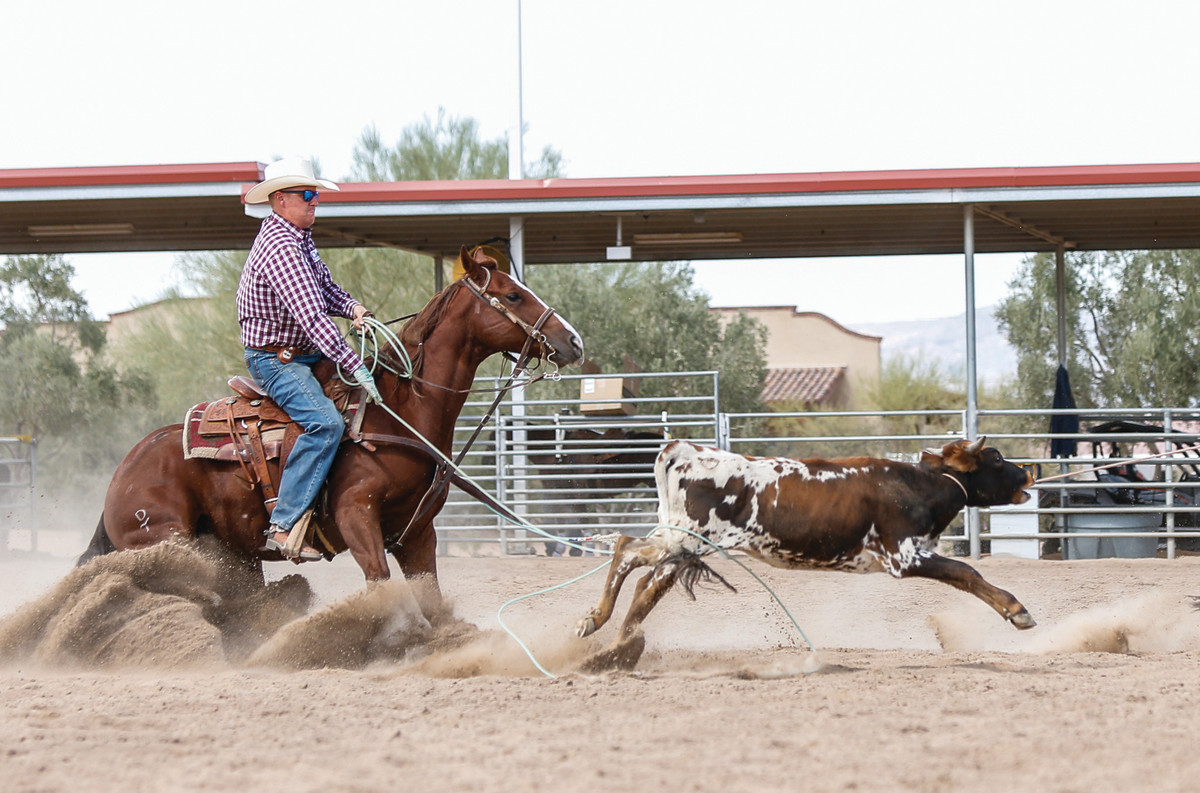
“The team roping industry has grown by leaps and bounds—over 1,000 percent since when I started roping,” said Yates, whose Pueblo, Colorado-based Hitchrack Performance Horses got its name from the brand handed down to him from momma Jan’s family ranch in Colorado Springs. “The big ropings are multi-million-dollar operations that give team ropers so much financial opportunity today. Everybody loves to win, and wants in on that big-money action. That makes good horses worth a lot of money.”
J.D. Yates and DT Air Jordan Win Second Consecutive ARHFA World Title
J.D.’s cousin, Jay Wadhams, heeled for Jay Ellerman at the 1993 NFR, and for J.D. at the Finals in 1996. Jay works as a hired gun for trainers, showing a number of horses in the heading and heeling. Jay’s ridden horses to 14 AQHA world championships over the years, including 2017 AQHA World Champion Senior Heel Horse Smart Nu Shiner, AKA Cisco.
Jay and his wife, Lindsay, who also live in Pueblo, founded the American Rope Horse Futurity Association 14 years ago. They started small in Fort Worth, and built the concept in Oklahoma, Texas and Nebraska before returning to Fort Worth last October for the breakthrough, blockbuster ARHFA World Championship Rope Horse Futurity, which featured $100,000 in added money and was held in conjunction with the National Reined Cow Horse Association’s Snaffle Bit Futurity. The Rope Horse Futurity is for horses ranging in age from 4-6.
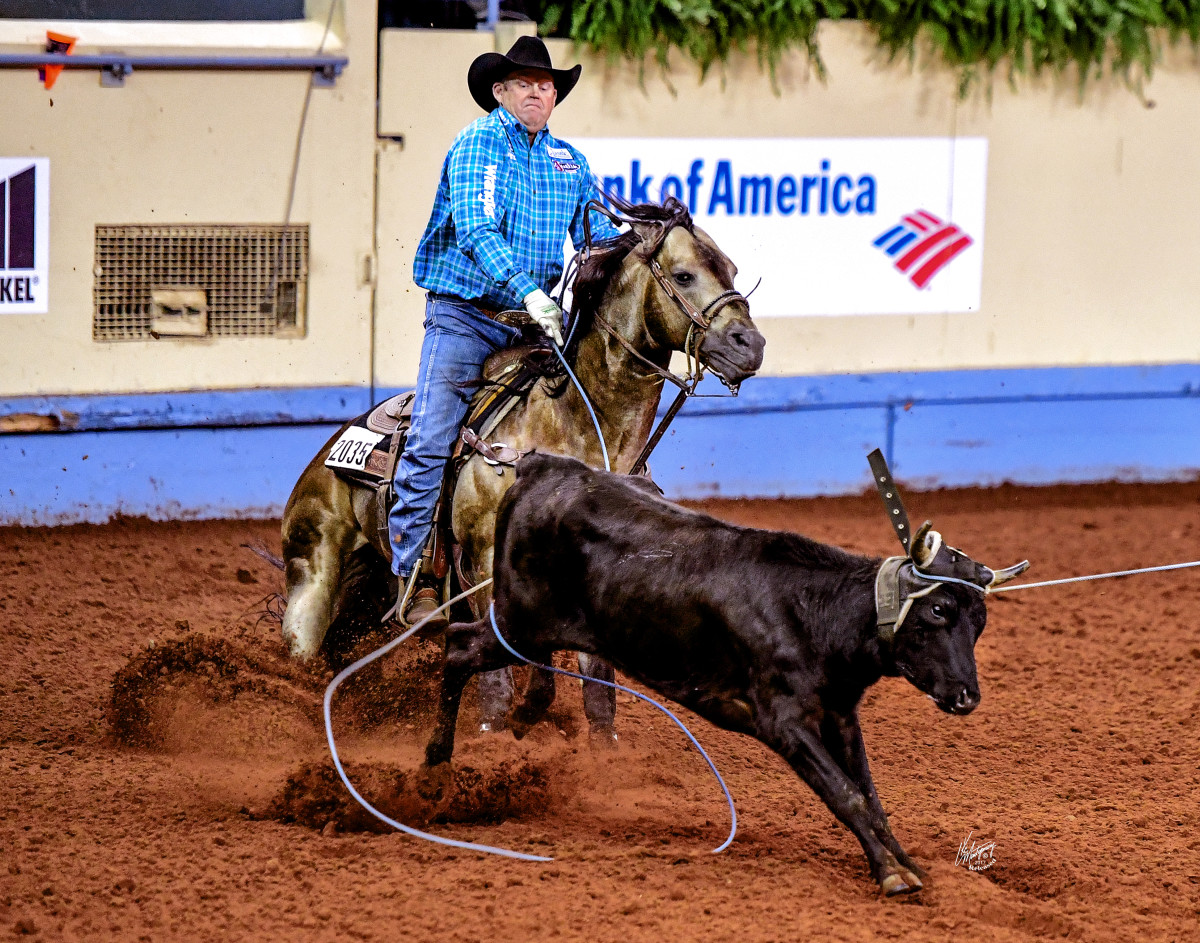
“We paid out $292,000 plus prizes in one day, which is a first,” Jay said. “There were 97 head horses and 122 heel horses entered. The industry is obviously ready. It’s hard to season young horses at the big-money ropings, where people are going to get on old faithful. But with lots and lots of money to win today, futurities are a place to showcase some very talented young horses. Because of the limited age group, the playing field is leveled, kind of like the number system does for the ropers. Horse sales where people have a chance to buy some of these really nice horses will follow, no doubt. These horses that are solid and about to turn 7 are pretty well seasoned for a recreational-type roper to go on with.
“All ropers are looking for a nice horse, and these futurities give people a chance to come watch a lot of great horses work, then pick one out for themselves, their kid or grandkid. When I go to buy a horse, I’m not looking for that really big show horse or rodeo horse. I’m looking for that really good horse you want to ride at the big roping. The horses at these futurities have such a solid foundation, and that’s the best base to start with and go on with to the ropings.”
According to Jay and J.D., the guy who stepped up and took the rope-horse futurity to the next level was Dean Tuftin of DT Horses. Dean heeled for Speed Williams at the 2007 NFR. He’s also a lifelong horseman, who’s ridden colts all his life, as well as everything from English horses to barrel horses, in addition to rope horses by the thousand.
“There are 200,000 team ropers in North America, and there are lots of NRCHA horses that don’t make great cow horses or cutters, but do make great rope horses,” said Tuftin, 47, who runs his operation with his wife, Leslie, out of Scottsdale, Arizona. “With these rope-horse futurities, we’re showcasing the best young horses and trainers in America. A lot of the horses being built now fit the jackpot system better than they do the rodeo trail. Ideally, I want my horses to go to the World Series of Team Roping arena, where there’s less pressure.”
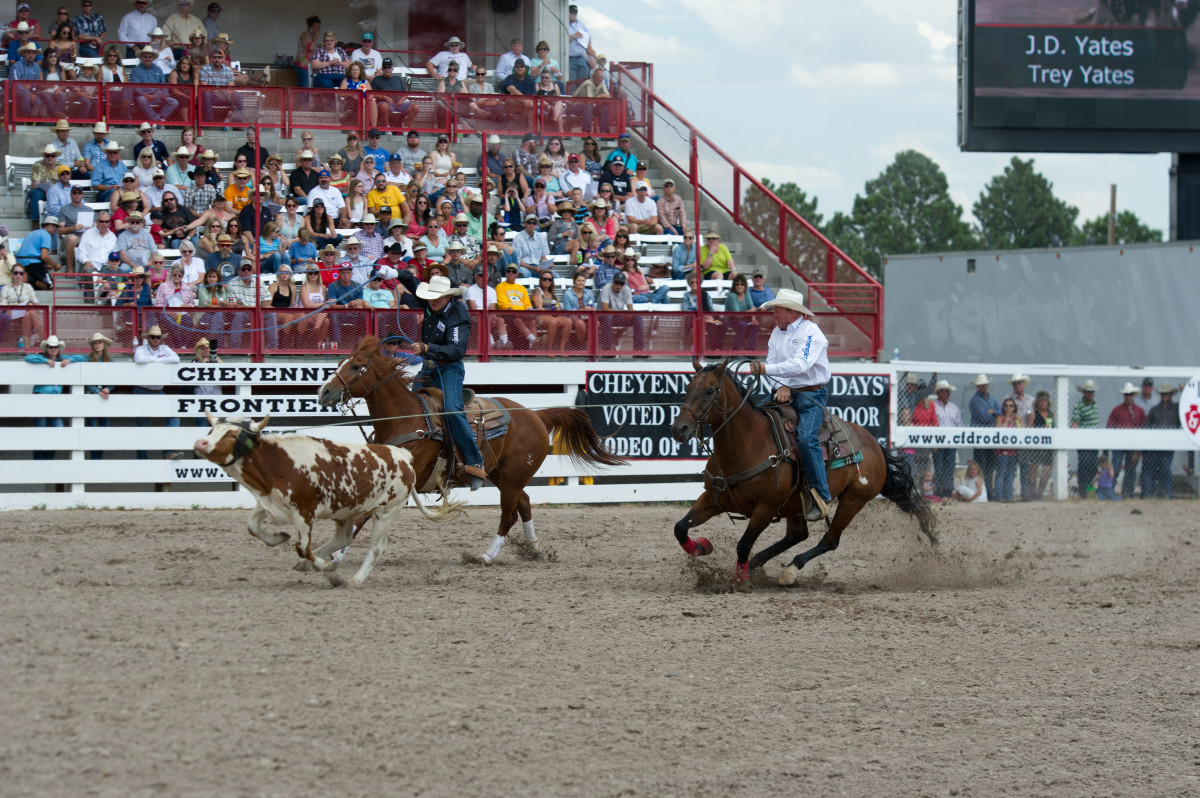
Dean’s had DT Horses out on the rodeo road, mind you, including Brady Minor’s two-time AQHA Heel Horse of the Year, Rey, who won that award in 2014-15.
“We build horses for longevity,” Tuftin said. “I don’t want to put all my time into the genetics, training and vet bills it takes to get one to a certain level, then have him get blown up in six months. That’s not a win-win. I typically sell a horse when he’s about 5. They aren’t ready for the rodeo trail then anyway.”
Tuftin started his rope-horse breeding program before he and Speed set sail with the goal of slaying the NFR dragon. Ironically, it all started with a couple of mares he bought in Rhode Island, which is where so many of their program’s proven champions came from, including Rey. Also somewhat unexpected was the advice Speed gave the lifelong horseman for when he wanted to win when timed and not judged.
“Speed said, ‘You can’t be focused on your horse going down the arena at the rodeos,’” Dean remembers. “You have to do your preparation at home, trust him at the rodeos, and focus only on roping that steer as fast as you can.”
Billie Jack Saebens also enters this conversation from every angle. He’s heeled for Coleman Proctor at the last two NFRs, and has been the head trainer for Dixon Flowers Rope Horses—which is owned by Duke and Lindsey Dixon, and Lindsey’s folks, Mike and Marcia Flowers—in Nowata, Oklahoma, the past eight years.
“We do everything from raising horses to starting 2-year-olds, training outside horses, tuning up people’s horses, and selling horses,” said Saebens, who’ll be 29 on March 24. “As a trainer, I just want to make a horse that anybody can ride. Of course when I start riding a horse, I always have high hopes that he’ll be the next great one. But whether he’s great or not, I want a #3 or a #10 to be able to win on him.”
Or her. Billie Jack’s been seen in recent times riding DT Sugar Chex Whiz at ropings and rodeos. The horse Billie Jack calls “The Black Mare” was raised, cow-horse broke and roped on by Tuftin before being finished as a rope horse by Yates for Dixon Flowers Rope Horses. J.D. won the 2015 AQHA Junior Tie-Down Roping World Championship on her. At 55, J.D. hung up his competitive calf ropes with that win, though he still trains tie-down roping horses.
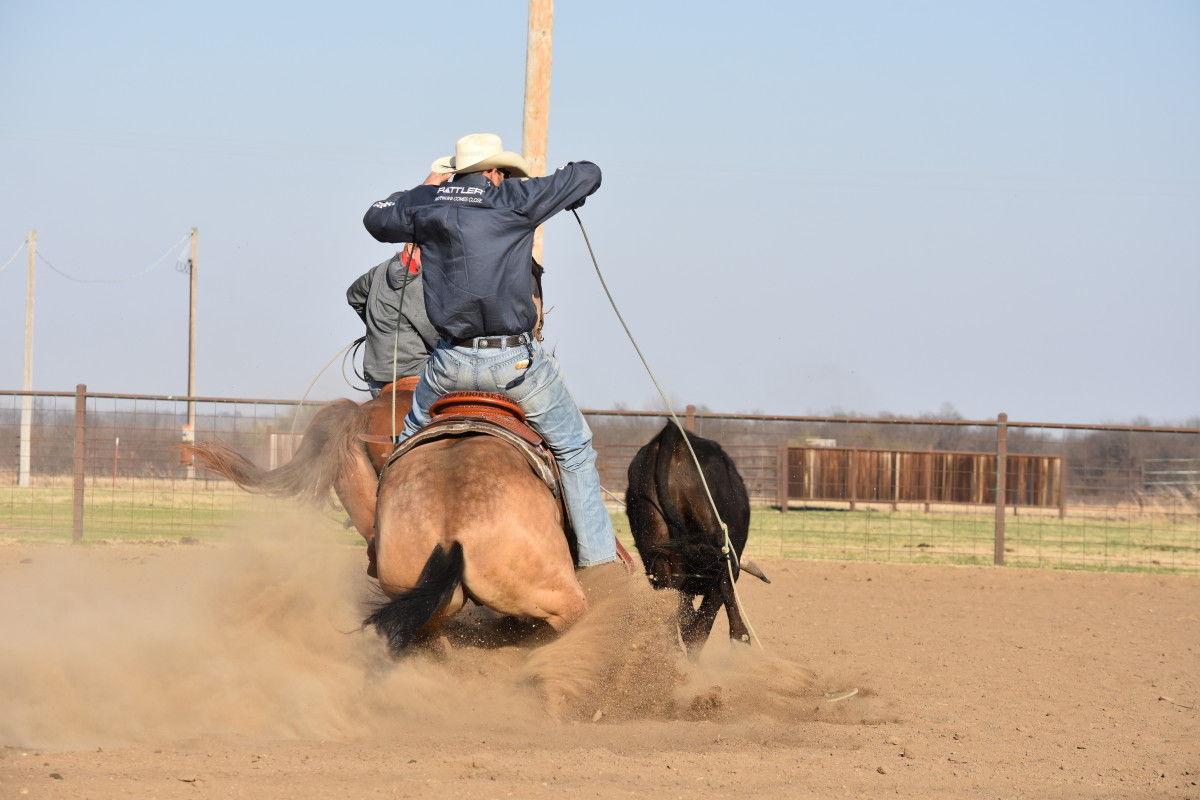
“Anybody who trains horses for a living will tell you that by the hour we probably don’t make minimum wage,” Billie Jack said. “But training horses has helped me understand horses better and appreciate them more. So many people handle their rope good. There has to be something that separates the good from the great, and that’s the horse you ride.”
Billie Jack piloted Dixon Flowers’ bay Macho Man Whiz, whom he’s ridden since he was 2, to the win at the big Rope Horse Futurity in Fort Worth in October, and won $22,500 on him there as just a 4-year-old.
“The industry is getting good enough to where it makes sense to raise and train rope horses today,” Saebens said. “We’re getting to the point where it’s financially feasible to take the time and money to do that. Horses are everything. If you’re very serious about your roping, you better be on something that won’t cost you anything. You might not be able to afford the very best one out there, but you need one you can count on.”
Horses are the heartbeat of the Yates-Wadhams family, and they’ve banked their lives on the backs of horses.
“Horses are our family,” said J.D., whose sister, Kelly, is an NFR barrel racer. “They bring our family together. They’re who we are and what we do. We ride horses. In our family, these horses are part of the family. They’re who we are and what we love.
“All we’ve ever done is ride horses, and what we figured out a long time ago is that if you teach a horse the right way first, he’ll last longer and make you more money at the end of the road. There are no shortcuts to making a good horse, and the value of the good ones is at an all-time high along with the money people can win now, which is amazing.”
J.D. has countless cool horse stories. But the coolest of all has to be the one about a bay horse by the name of Buster, whom J.D. bought as a 3-year-old and gave to Daddy Dick for Father’s Day that year. Fast forward 22 years to the 2016 Cheyenne Frontier Days Rodeo, where then-25-year-old Buster (his registered name is Catheys Dividend) helped 56-year-old J.D. win the all-around championship at the Daddy of ’em All in the Cowboy State of Wyoming.
“I bought Buster from (1949, ’50, ’54 and ’55 World Champion Steer Roper) Shoat Webster,” J.D. explained. “He was by Shoat’s Thoroughbred stud he called Dividend and out of a Quarter Horse mare. My dad roped on him for years. I won the 2002 NFR average on him (heading for Bobby Harris). I won the NFSR average on him in 2008. When Jay and I won the BFI in 2010 I was riding Buster.
“At 56, that 25-year-old horse let me split the second round and win third in the average with my son (Trey) at Cheyenne. I also won third in the steer roping (riding a different horse that day). I’m a short, fat guy who’d had a knee replacement earlier that year, and I won the all-around at The Daddy. Horses let that happen.”
And that was not an isolated incident.
“I’ve always known that the better the horse I had, the better chance I had to win,” J.D. continued. “A lot of people have always roped better than me. I take a lot of pride in having good horses between my legs. I’m now 57 years old and competing against guys half my age. I want and need a great horse to make up the difference. The success in my career has been all about horses.
“At my age, there’s nothing better than seeing someone take one of the horses I’ve trained and go win on him. When you can train one somebody else can ride and win on, that’s a great feeling. It doesn’t get any better than that. It’s where I get my pride and enjoyment now—spending time on horses and making sure that when they go on down the road after me they can help other people succeed. That’s a win for me.”
“We’re to the point where there’s actually competition among ropers to get their hands on the good horses,” Jay said. “These ropings are paying so much money that people are starting to recognize the value of investing in the best horse they can buy. There are so many people roping anymore that the good ones can be hard to find. But as that demand increases, more trainers are able to make a business of making good horses, and the result of that is more good horses on the market.
“There are more rope horse trainers now than ever before, because of that demand. People like me are working to connect the people who are making the best horses with the people who need them. Not every glove fits every hand, so it’s important that people are matched with horses that’ll work for them.”
Wadhams cautions recreational ropers from making the age-old mistake of starting with a green horse and thinking they can learn the ropes together.
“I tell people who work for a living to go spend the money on a good, finished horse, so they can enjoy roping,” Jay said. “Roping is not their job, and getting on a colt or a horse they have to fight with when they have limited time to rope is not fun. If you rope for fun and aren’t having any fun at it, what’s the point?”
Tuftin, who bred, raised and trained 2017 World Rope Horse Futurity Head Horse Champ DT Air Jordan, seconds that.
“Some lower-numbered ropers don’t realize how much better they’ll do on a good horse,” he said. “At that stage, you don’t need a sports car. You need a Chevy pickup you can trust, that won’t get you in a wreck. You wouldn’t drive down the freeway without steering and brakes. Why would you want to run down the arena chasing a steer at full speed without steering and brakes?”
“These horses are athletes. What the best ropers do is magic, and everyone wants to watch the best in any sport. But a lot of guys at every level blame missing on their right hand when they didn’t ride their horse into correct position. We’re just now tapping into the importance of genetics and horsemanship in the roping industry, and the difference it’s already making is huge.
“The results that come with riding a better horse are off the charts. Our process is long. Patience is a big part of all good training programs. But the results say it’s worth it. A lot of people have never ridden a really good horse, so they don’t know what they’re missing. That’s changing, too. Try it, you’ll get it and you won’t go back.”





